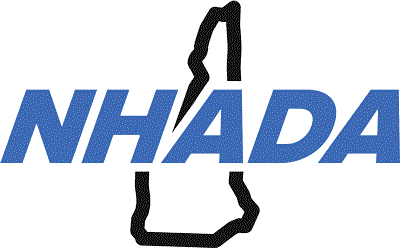Members of the NHADA Workers’ Compensation Trust are privileged to be part of the Windham Group Managed Care Program. Being part of this network gives injured workers access to the best occupational health providers and specialists in New Hampshire. In personal medical circumstances, you may wait days or weeks to get in to see a specialist; but with participation in our managed care program, injured workers in most cases can be seen the same day by an occupational health provider or specialist.
When an employee is hurt at work, we ask that you call us for assistance with a referral to an in-network provider. If the injury is a life-or-death emergency, you should always call 911 or seek treatment at your closest emergency room. During this call, we will gather the initial information on the nature of the injury so we can make the referral to the most appropriate provider. Sometimes, before we have had a chance to make medical provider suggestions to members, occasionally they want to send their injured worker to an out-of-network provider or to the ER because it’s convenient or they know someone who has been treated there before.
Here is a review of the reasons we make the suggestions we do during this call:
- Participants in the Windham Group Managed Care Program are required to treat within the managed care network. There are some exceptions to this rule; if an injured worker has been treated for the same or similar condition in the past six months, they may see that provider. If the specialty that is needed is not available in the network, they may see an out-of-network provider that offers that specialty. If an injured worker chooses to treat out of network, we will put them on notice, and their bills with the out-of-network provider may not be covered by workers comp.
- Providers that are in the network offer the highest level of specialty care for our injured workers. Treating with the appropriate provider from the start means working toward a resolution of the injury in a timelier manner. The medical care of the injured worker is our highest priority. If an injury is to the eye, an eye doctor is the best place to start. If the injury is orthopedic, then starting out with an orthopedic doctor may be appropriate. For most occupational injuries starting out with an occupational specialist is the best first step, and the network has these throughout the state, offering same-day appointments.
- Much of the management of a claim depends on the gathering of information. We gather information through interviews with the injured worker, the employer and witnesses. Probably one of the most important pieces of information we gather is from medical records. Medical providers are required to submit their medical records in a timely fashion when treating an injured worker. Network providers understand the need to do so, whereas some providers do not abide by these rules. If we do not have the medical records needed to review a claim, it can lead to a claim being denied pending their receipt. These delays can waste valuable time — treating with network providers helps us ensure we will get the information we need.
- Another vital part of claims management is the billing for medical treatment. As the bills for medical treatment of the injured worker are received, they are reviewed along with the medical records and either processed for payment or denied. In-network providers understand the need to submit billing and documentation timely. Unfortunately, some providers will either not submit their billing in a timely fashion, or when they do submit it, they fail to attach the required medical records. These steps all delay the process and keep claims open much longer than after the last treatment date.
- Preferred providers often offer a discount on their billing. The best medical care is a priority but containing costs is a close second.
- A common misconception in medical care is that the ER is the best place to seek medical treatment for any injury. The ER is the best place to treat “emergencies,”; which means life-threatening injuries or illnesses. Presenting to an ER with non-life-threatening injuries can delay care for others that may need it. It can clog up an ER; and delay the care for your injured worker. Time away from work to treat an injury can be significantly longer when treatment is sought at an ER. Typically, a co-worker may drive the injured worker to the ER and wait with them while they get treatment; now, you have two employees missing time from work.
- ER treatment is costly. If it’s necessary, then it’s worth it; but if someone presents to the ER for a non-life-threatening reason, the cost is not justified. A simple laceration repair at an occupational medicine clinic may run approximately $300-$500. The same repair at an ER could run upward of $3,000. This is not money or time well spent.
Remember to always give us a call prior to sending the injured worker for medical care when it is not life-threatening; we will assist you with the most appropriate specialty referral. Although the clinic or ER might be right next door, it doesn’t always mean it is the best choice.
If you have any questions on our managed care program, or if a specific provider is in the network, please contact Marta Silakka at 603-224-2369 or via email at msilakka@nhada.com.









